Linux 36.3 + JetPack v6.0@jetson-inference之图像分类
Linux 36.3 + JetPack v6.0@jetson-inference之图像分类
- 1. 源由
- 2. imagenet
- 2.1 命令选项
- 2.2 下载模型
- 2.3 操作示例
- 2.3.1 单张照片
- 2.3.2 视频
- 3. 代码
- 3.1 Python
- 3.2 C++
- 4. 参考资料
- 5. 补充
- 5.1 第一次运行模型本地适应初始化
- 5.2 samba软连接
1. 源由
从应用角度来说,图像分类是计算机视觉里面最基本的一个操作。
2. imagenet
imageNet对象接受输入图像并输出每个类别的概率。GoogleNet和ResNet-18模型在构建过程中自动下载,这些模型已在包含1000个物体的ImageNet ILSVRC数据集上进行了训练。
2.1 命令选项
$ imagenet --help
usage: imagenet [--help] [--network=NETWORK] ...input_URI [output_URI]Classify a video/image stream using an image recognition DNN.
See below for additional arguments that may not be shown above.optional arguments:--help show this help message and exit--network=NETWORK pre-trained model to load (see below for options)--topK=N show the topK number of class predictions (default: 1)
positional arguments:input_URI resource URI of input stream (see videoSource below)output_URI resource URI of output stream (see videoOutput below)imageNet arguments:--network=NETWORK pre-trained model to load, one of the following:* alexnet* googlenet (default)* googlenet-12* resnet-18* resnet-50* resnet-101* resnet-152* vgg-16* vgg-19* inception-v4--model=MODEL path to custom model to load (caffemodel, uff, or onnx)--prototxt=PROTOTXT path to custom prototxt to load (for .caffemodel only)--labels=LABELS path to text file containing the labels for each class--input-blob=INPUT name of the input layer (default is 'data')--output-blob=OUTPUT name of the output layer (default is 'prob')--threshold=CONF minimum confidence threshold for classification (default is 0.01)--smoothing=WEIGHT weight between [0,1] or number of frames (disabled by default)--profile enable layer profiling in TensorRTvideoSource arguments:input resource URI of the input stream, for example:* /dev/video0 (V4L2 camera #0)* csi://0 (MIPI CSI camera #0)* rtp://@:1234 (RTP stream)* rtsp://user:pass@ip:1234 (RTSP stream)* webrtc://@:1234/my_stream (WebRTC stream)* file://my_image.jpg (image file)* file://my_video.mp4 (video file)* file://my_directory/ (directory of images)--input-width=WIDTH explicitly request a width of the stream (optional)--input-height=HEIGHT explicitly request a height of the stream (optional)--input-rate=RATE explicitly request a framerate of the stream (optional)--input-save=FILE path to video file for saving the input stream to disk--input-codec=CODEC RTP requires the codec to be set, one of these:* h264, h265* vp8, vp9* mpeg2, mpeg4* mjpeg--input-decoder=TYPE the decoder engine to use, one of these:* cpu* omx (aarch64/JetPack4 only)* v4l2 (aarch64/JetPack5 only)--input-flip=FLIP flip method to apply to input:* none (default)* counterclockwise* rotate-180* clockwise* horizontal* vertical* upper-right-diagonal* upper-left-diagonal--input-loop=LOOP for file-based inputs, the number of loops to run:* -1 = loop forever* 0 = don't loop (default)* >0 = set number of loopsvideoOutput arguments:output resource URI of the output stream, for example:* file://my_image.jpg (image file)* file://my_video.mp4 (video file)* file://my_directory/ (directory of images)* rtp://<remote-ip>:1234 (RTP stream)* rtsp://@:8554/my_stream (RTSP stream)* webrtc://@:1234/my_stream (WebRTC stream)* display://0 (OpenGL window)--output-codec=CODEC desired codec for compressed output streams:* h264 (default), h265* vp8, vp9* mpeg2, mpeg4* mjpeg--output-encoder=TYPE the encoder engine to use, one of these:* cpu* omx (aarch64/JetPack4 only)* v4l2 (aarch64/JetPack5 only)--output-save=FILE path to a video file for saving the compressed streamto disk, in addition to the primary output above--bitrate=BITRATE desired target VBR bitrate for compressed streams,in bits per second. The default is 4000000 (4 Mbps)--headless don't create a default OpenGL GUI windowlogging arguments:--log-file=FILE output destination file (default is stdout)--log-level=LEVEL message output threshold, one of the following:* silent* error* warning* success* info* verbose (default)* debug--verbose enable verbose logging (same as --log-level=verbose)--debug enable debug logging (same as --log-level=debug)
注:关于照片、视频等基本操作,详见: 《Linux 36.3 + JetPack v6.0@jetson-inference之视频操作》
2.2 下载模型
两种方式:
- 创建imageNet对象时,初始化会自动下载
- 通过手动将模型文件放置到
data/networks/目录下
国内,由于“墙”的存在,对于我们这种处于起飞阶段的菜鸟来说就是“障碍”。有条件的朋友可以参考《apt-get通过代理更新系统》进行设置网络。
不过,NVIDIA还是很热心的帮助我们做了“Work around”,所有的模型都已经预先存放在中国大陆能访问的位置:Github - model-mirror-190618
--network=NETWORK pre-trained model to load, one of the following:* alexnet* googlenet (default)* googlenet-12* resnet-18* resnet-50* resnet-101* resnet-152* vgg-16* vgg-19* inception-v4--model=MODEL path to custom model to load (caffemodel, uff, or onnx)
根据以上Model方面信息,该命令支持:
- alexnet
- googlenet (default)
- googlenet-12
- resnet-18
- resnet-50
- resnet-101
- resnet-152
- vgg-16
- vgg-19
- inception-v4
- 支持定制模型(需要用到通用的模型文件caffemodel, uff, or onnx)
作为示例,就下载一个googlenet (default)模型
$ mkdir model-mirror-190618
$ cd model-mirror-190618
$ wget https://github.com/dusty-nv/jetson-inference/releases/download/model-mirror-190618/GoogleNet.tar.gz
$ mkdir -p ../data/networks/Googlenet
$ tar -zxvf GoogleNet.tar.gz -C ../data/networks/Googlenet
$ cd ..
注:这个模型文件下载要注意,将解压缩文件放置到Googlenet目录下。
2.3 操作示例
它加载图像(或多张图像),使用TensorRT和imageNet类进行推理,然后叠加分类结果并保存输出图像。该项目附带了供您使用的示例图像,这些图像位于images/目录下。
- What’s wrong with imagenet, continous printf?
$ cd build/aarch64/bin/
2.3.1 单张照片
# C++
$ ./imagenet images/orange_0.jpg images/test/output_imagenet_cpp.jpg

# Python
$ ./imagenet.py images/strawberry_0.jpg images/test/output_imagenet_python.jpg

2.3.2 视频
# Download test video (thanks to jell.yfish.us)
$ wget https://nvidia.box.com/shared/static/tlswont1jnyu3ix2tbf7utaekpzcx4rc.mkv -O jellyfish.mkv
# C++
$ ./imagenet --network=resnet-18 ../../../jellyfish.mkv images/test/output_imagenet_jellyfish_cpp.mkv
# Python
$ ./imagenet.py --network=resnet-18 ../../../jellyfish.mkv images/test/output_imagenet_jellyfish_python.mkv
这里视频就放一份了,理论上将既然有概率性的问题求解方式,不同时间运算的结果可能会有差异。但是基于这个模型,计算机没有记忆,所以理论上是同一个概率。
那么问题来了,照片的CPP和Python两次运算概率确是是不一样的。这是什么原因呢?
output_imagenet_jellyfish_cpp
3. 代码
3.1 Python
Import statements
├── sys
├── argparse
├── jetson_inference
│ └── imageNet
└── jetson_utils├── videoSource├── videoOutput├── cudaFont└── LogCommand line parsing
├── Create ArgumentParser
│ ├── description
│ ├── formatter_class
│ └── epilog
├── Add arguments
│ ├── input
│ ├── output
│ ├── --network
│ └── --topK
└── Parse arguments├── try│ └── args = parser.parse_known_args()[0]└── except├── print("")├── parser.print_help()└── sys.exit(0)Load the recognition network
└── net = imageNet(args.network, sys.argv)Optional hard-coded model loading (commented out)
└── net = imageNet(model="model/resnet18.onnx", labels="model/labels.txt", input_blob="input_0", output_blob="output_0")Create video sources & outputs
├── input = videoSource(args.input, argv=sys.argv)
├── output = videoOutput(args.output, argv=sys.argv)
└── font = cudaFont()Process frames until EOS or user exits
└── while True├── Capture the next image│ ├── img = input.Capture()│ └── if img is None│ └── continue├── Classify the image and get the topK predictions│ └── predictions = net.Classify(img, topK=args.topK)├── Draw predicted class labels│ └── for n, (classID, confidence) in enumerate(predictions)│ ├── classLabel = net.GetClassLabel(classID)│ ├── confidence *= 100.0│ ├── print(f"imagenet: {confidence:05.2f}% class #{classID} ({classLabel})")│ └── font.OverlayText(img, text=f"{confidence:05.2f}% {classLabel}", │ x=5, y=5 + n * (font.GetSize() + 5),│ color=font.White, background=font.Gray40)├── Render the image│ └── output.Render(img)├── Update the title bar│ └── output.SetStatus("{:s} | Network {:.0f} FPS".format(net.GetNetworkName(), net.GetNetworkFPS()))├── Print out performance info│ └── net.PrintProfilerTimes()└── Exit on input/output EOS└── if not input.IsStreaming() or not output.IsStreaming()└── break
3.2 C++
#include statements
├── "videoSource.h"
├── "videoOutput.h"
├── "cudaFont.h"
├── "imageNet.h"
└── <signal.h>Global variables
└── bool signal_recieved = false;Function definitions
├── void sig_handler(int signo)
│ └── if (signo == SIGINT)
│ ├── LogVerbose("received SIGINT\n");
│ └── signal_recieved = true;
└── int usage()├── printf("usage: imagenet [--help] [--network=NETWORK] ...\n");├── printf(" input_URI [output_URI]\n\n");├── printf("Classify a video/image stream using an image recognition DNN.\n");├── printf("See below for additional arguments that may not be shown above.\n\n");├── printf("optional arguments:\n");├── printf(" --help show this help message and exit\n");├── printf(" --network=NETWORK pre-trained model to load (see below for options)\n");├── printf(" --topK=N show the topK number of class predictions (default: 1)\n");├── printf("positional arguments:\n");├── printf(" input_URI resource URI of input stream (see videoSource below)\n");├── printf(" output_URI resource URI of output stream (see videoOutput below)\n\n");├── printf("%s", imageNet::Usage());├── printf("%s", videoSource::Usage());├── printf("%s", videoOutput::Usage());└── printf("%s", Log::Usage());main function
├── Parse command line
│ ├── commandLine cmdLine(argc, argv);
│ └── if (cmdLine.GetFlag("help"))
│ └── return usage();
├── Attach signal handler
│ └── if (signal(SIGINT, sig_handler) == SIG_ERR)
│ └── LogError("can't catch SIGINT\n");
├── Create input stream
│ ├── videoSource* input = videoSource::Create(cmdLine, ARG_POSITION(0));
│ └── if (!input)
│ ├── LogError("imagenet: failed to create input stream\n");
│ └── return 1;
├── Create output stream
│ ├── videoOutput* output = videoOutput::Create(cmdLine, ARG_POSITION(1));
│ └── if (!output)
│ ├── LogError("imagenet: failed to create output stream\n");
│ └── return 1;
├── Create font for image overlay
│ ├── cudaFont* font = cudaFont::Create();
│ └── if (!font)
│ ├── LogError("imagenet: failed to load font for overlay\n");
│ └── return 1;
├── Create recognition network
│ ├── imageNet* net = imageNet::Create(cmdLine);
│ └── if (!net)
│ ├── LogError("imagenet: failed to initialize imageNet\n");
│ └── return 1;
│ ├── const int topK = cmdLine.GetInt("topK", 1); // default top result
├── Processing loop
│ └── while (!signal_recieved)
│ ├── uchar3* image = NULL;
│ ├── int status = 0;
│ ├── if (!input->Capture(&image, &status))
│ │ └── if (status == videoSource::TIMEOUT)
│ │ └── continue;
│ │ └── break; // EOS
│ ├── imageNet::Classifications classifications; // classID, confidence
│ ├── if (net->Classify(image, input->GetWidth(), input->GetHeight(), classifications, topK) < 0)
│ │ └── continue;
│ ├── for (uint32_t n=0; n < classifications.size(); n++)
│ │ ├── const uint32_t classID = classifications[n].first;
│ │ ├── const char* classLabel = net->GetClassLabel(classID);
│ │ ├── const float confidence = classifications[n].second * 100.0f;
│ │ ├── LogVerbose("imagenet: %2.5f%% class #%i (%s)\n", confidence, classID, classLabel);
│ │ ├── char str[256];
│ │ ├── sprintf(str, "%05.2f%% %s", confidence, classLabel);
│ │ └── font->OverlayText(image, input->GetWidth(), input->GetHeight(),
│ │ str, 5, 5 + n * (font->GetSize() + 5),
│ │ make_float4(255,255,255,255), make_float4(0,0,0,100));
│ ├── if (output != NULL)
│ │ ├── output->Render(image, input->GetWidth(), input->GetHeight());
│ │ ├── char str[256];
│ │ ├── sprintf(str, "TensorRT %i.%i.%i | %s | Network %.0f FPS", NV_TENSORRT_MAJOR, NV_TENSORRT_MINOR, NV_TENSORRT_PATCH, net->GetNetworkName(), net->GetNetworkFPS());
│ │ └── output->SetStatus(str);
│ │ └── if (!output->IsStreaming())
│ │ └── break;
│ └── net->PrintProfilerTimes();
├── Destroy resources
│ ├── LogVerbose("imagenet: shutting down...\n");
│ ├── SAFE_DELETE(input);
│ ├── SAFE_DELETE(output);
│ ├── SAFE_DELETE(net);
└── LogVerbose("imagenet: shutdown complete.\n");return 0;
4. 参考资料
【1】jetson-inference - Classifying Images with ImageNet
5. 补充
5.1 第一次运行模型本地适应初始化
第一次运行神经网络,虽然模型是预训练的,但是本地部署还是有个初始化过程,好像是建立一些cache的过程,具体有待进一步研究。
注:有知道为什么是这样,也请评论区告诉我,谢谢!
- imagenet can’t work as readme says, see attached log #1858
- could not find engine cache … MonoDepth-FCN-Mobilenet/monodepth_fcn_mobilenet.onnx.1.1.8602.GPU.FP16.engine ? #1855
- What’s wrong with imagenet/detectnet, continous printf?
5.2 samba软连接
注:share请替换为samba共享目录,比如:home
- ubuntu22.04 配置
[global]
allow insecure wide links = yes[share]
follow symlinks = yes
wide links = yes
- 之前的版本
[global]
unix extensions = no[share]
follow symlinks = yes
wide links = yes
相关文章:

Linux 36.3 + JetPack v6.0@jetson-inference之图像分类
Linux 36.3 JetPack v6.0jetson-inference之图像分类 1. 源由2. imagenet2.1 命令选项2.2 下载模型2.3 操作示例2.3.1 单张照片2.3.2 视频 3. 代码3.1 Python3.2 C 4. 参考资料5. 补充5.1 第一次运行模型本地适应初始化5.2 samba软连接 1. 源由 从应用角度来说,图…...
重庆公司记账代理,打造专业财务管理解决方案的领先企业
重庆公司记账代理,作为专业的财务管理服务提供商,我们的目标是为公司的经营管理和决策提供科学、准确的财务数据支持,我们通过长期的专业经验和对市场的深入理解,为您提供一站式的记账服务和财务咨询。 专业团队 我们拥有一支由经…...

transformers 阅读:Llama 模型
正文 学习一下 transformers 库中,Llama 模型的代码,学习过程中写下这篇笔记,一来加深印象,二来可以多次回顾。 笔者小白,里面错误之处请不吝指出。 层归一化 LlamaRMSNorm transformers 中对于 LlamaRMSNorm 类的…...

python绘制piper三线图
piper三线图 Piper三线图是一种常用于水化学分析的图表,它能够帮助我们理解和比较水样的化学成分。该图表由三个部分组成:两个三角形和一个菱形。两个三角形分别用于显示阳离子和阴离子的相对比例,而菱形部分则综合显示了这些离子比例在水样…...

咖啡机器人如何精准控制液位流量
在如今快节奏的生活中,精确控制液位流量的需求愈发迫切,特别是在咖啡机器人等精密设备中。为了满足这一需求,工程师们不断研发出各种先进的技术,以确保液体流量的精准控制。其中,霍尔式流量计和光电式流量计就是两种常…...

Go go-redis应用
go-redis 是 Go 语言的一个流行的 Redis 客户端库,它提供了丰富的功能来与 Redis 数据库进行交互。 1、简单应用 package mainimport ("context""fmt""log""github.com/redis/go-redis/v9" )func main() {ctx : context…...

从混乱到有序:PDM系统如何优化物料编码
在现代制造业中,物料管理是企业运营的核心。物料编码作为物料管理的基础,对于确保物料的准确性、唯一性和高效性至关重要。随着产品种类的不断增加和产品变型的多样化,传统的物料编码管理方式已经不能满足企业的需求。本文将探讨产品数据管理…...

npm发布自己的插件包
要发布自己的插件包到npm,可以按照以下步骤进行操作: 1.创建一个新项目 首先确保你已经安装了Node.js和npm。然后,在你的项目目录中初始化一个新的npm项目:npm init命令会引导你创建一个package.json文件,其中包含你插件包的基本…...

Pygame:新手指南与入门教程
在游戏开发领域,pygame 是一个广受欢迎的 Python 库,它提供了开发二维游戏的丰富工具和方法。这个库让开发者可以较少地关注底层图形处理细节,更多地专注于游戏逻辑和玩法的实现。本文将详细介绍 pygame,包括其安装过程、基本概念、主要功能和一个简单游戏的开发流程。 一…...

动态IP与静态IP的优缺点
在网络连接中,使用动态和静态 IP 地址取决于连接的性质和要求。静态 IP 地址通常更适合企业相关服务,而动态 IP 地址更适合家庭网络。让我们来看看动态 IP 与静态 IP 的优缺点。 1.静态IP的优点: 更好的 DNS 支持:静态 IP 地址在…...

上海市计算机学会竞赛平台2024年1月月赛丙组最大的和
题目描述 给定两个序列 𝑎1,𝑎2,…,𝑎𝑛a1,a2,…,an 与 𝑏1,𝑏2,…,𝑏𝑛b1,b2,…,bn,请从这两个序列中分别各找一个数,要求这两个数的差不超过给…...

C++三大特性之继承,详细介绍
阿尼亚全程陪伴大家学习~ 前言 每个程序员在开发新系统时,都希望能够利用已有的软件资源,以缩短开发周期,提高开发效率。 为了提高软件的可重用性(reusability),C提供了类的继承机制。 1.继承的概念 继承: 指在现有…...

Python推导式详解
引言 推导式(Comprehensions)是Python中一种简洁且强大的语法结构,可以用来生成列表、字典和集合。推导式使得代码更加简洁、易读,同时也更具Pythonic风格。今天我将将详细介绍列表推导式、字典推导式和集合推导式…...

stm32中如何实现EXTI线 0 ~ 15与对应IO口的配置呢?
STM32的EXTI控制器支持19 个外部中断/ 事件请求。每个中断设有状态位,每个中断/ 事件都有独立的触发和屏蔽设置。 STM32的19个外部中断对应着19路中断线,分别是EXTI_Line0-EXTI_Line18: 线0~15:对应外部 IO口的输入中断。 线16&…...

Python 短文本匹配,短文本语义相似度,基于大模型的短文本匹配,基于LLMs的短文本语义相似度识别,短文本语义扩充和匹配
1.任务描述 之前在做疾病相似度匹配的时候,堪称史诗级难题,虽然最后加上规则以及一些nlp模型,取得了差强人意的效果,但是短文本的语义相似度匹配一直属于比较难以攻克的难题 2.思路 随着近年大模型的飞速发展,就之前…...

提升接口性能方式汇总
1,sql 2,缓存,尤其面向用户,如app数据。可用redis咖啡,二级缓存。 充分利用redis,redis数据类型很多,平时场景中结合实际情况,找一下对应的redis实现方案 比如Zset可以排序&#…...

C++中的常见语法糖汇总
C中的语法糖是指使代码更简洁、可读性更高的语言特性和简化的语法。以下是一些常见的C语法糖: 1. 自动类型推导(auto) 使用 auto 关键字可以让编译器自动推导变量的类型,简化变量的声明。 auto x 10; // 编译器推导 x…...

TensorFlow Playground神经网络演示工具使用方法详解
在现代机器学习领域,神经网络无疑是一个重要的研究方向。然而,对于许多初学者来说,神经网络的概念和实际操作可能显得相当复杂。幸运的是,TensorFlow Playground 提供了一个交互式的在线工具,使得我们可以直观地理解和实验神经网络的基本原理。在这篇博客中,我们将详细介…...

【git】subtree 简单教程
git subtree使用案例 😄生命不息,写作不止 🔥 继续踏上学习之路,学之分享笔记 👊 总有一天我也能像各位大佬一样 🏆 博客首页 怒放吧德德 To记录领地 🌝分享学习心得,欢迎指正&am…...

C语言基础:字符串函数使用与剖析
strtok(分割字符串) char * strtok ( char * str, const char * sep ); sep参数是个字符串,定义了用作分隔符的字符集合 第一个参数指定一个字符串,它包含了0个或者多个由sep字符串中一个或者多个分隔符分割的标 记。strtok函数找…...
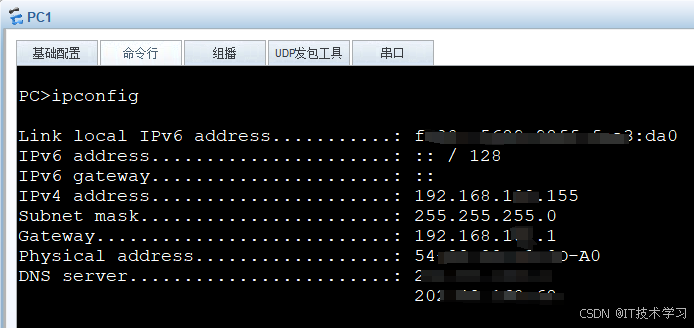
eNSP-Cloud(实现本地电脑与eNSP内设备之间通信)
说明: 想象一下,你正在用eNSP搭建一个虚拟的网络世界,里面有虚拟的路由器、交换机、电脑(PC)等等。这些设备都在你的电脑里面“运行”,它们之间可以互相通信,就像一个封闭的小王国。 但是&#…...

pam_env.so模块配置解析
在PAM(Pluggable Authentication Modules)配置中, /etc/pam.d/su 文件相关配置含义如下: 配置解析 auth required pam_env.so1. 字段分解 字段值说明模块类型auth认证类模块,负责验证用户身份&am…...
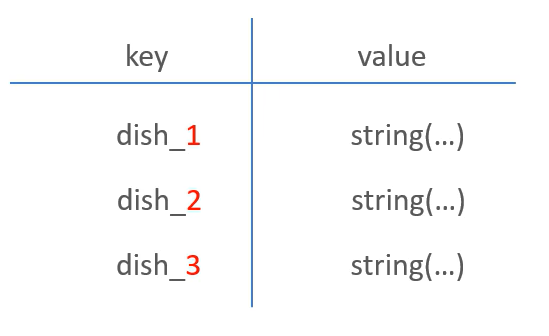
苍穹外卖--缓存菜品
1.问题说明 用户端小程序展示的菜品数据都是通过查询数据库获得,如果用户端访问量比较大,数据库访问压力随之增大 2.实现思路 通过Redis来缓存菜品数据,减少数据库查询操作。 缓存逻辑分析: ①每个分类下的菜品保持一份缓存数据…...
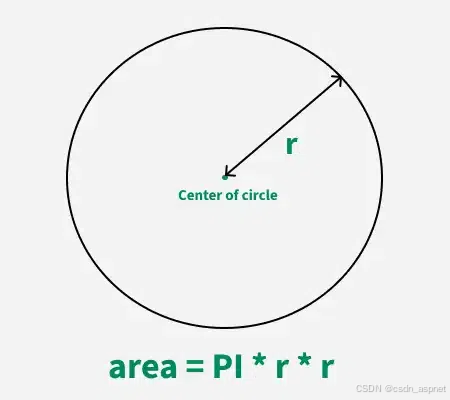
C++ 求圆面积的程序(Program to find area of a circle)
给定半径r,求圆的面积。圆的面积应精确到小数点后5位。 例子: 输入:r 5 输出:78.53982 解释:由于面积 PI * r * r 3.14159265358979323846 * 5 * 5 78.53982,因为我们只保留小数点后 5 位数字。 输…...
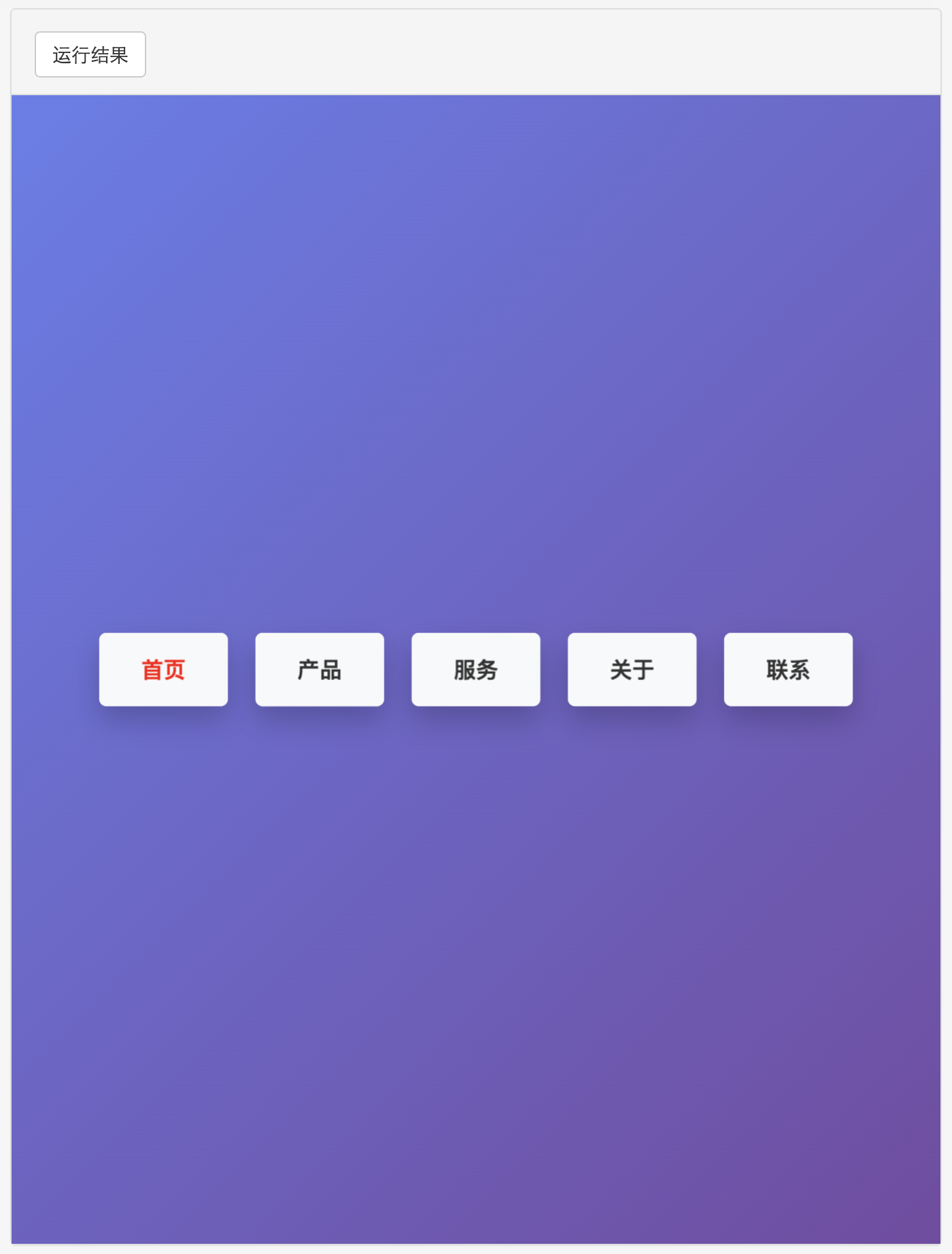
多种风格导航菜单 HTML 实现(附源码)
下面我将为您展示 6 种不同风格的导航菜单实现,每种都包含完整 HTML、CSS 和 JavaScript 代码。 1. 简约水平导航栏 <!DOCTYPE html> <html lang"zh-CN"> <head><meta charset"UTF-8"><meta name"viewport&qu…...
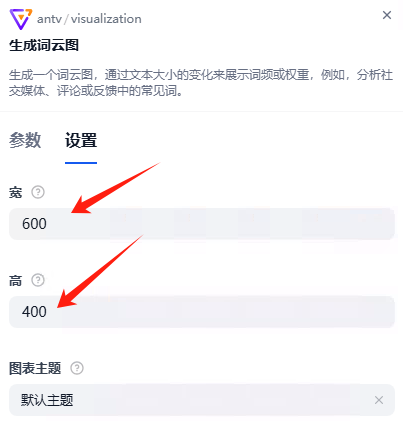
dify打造数据可视化图表
一、概述 在日常工作和学习中,我们经常需要和数据打交道。无论是分析报告、项目展示,还是简单的数据洞察,一个清晰直观的图表,往往能胜过千言万语。 一款能让数据可视化变得超级简单的 MCP Server,由蚂蚁集团 AntV 团队…...
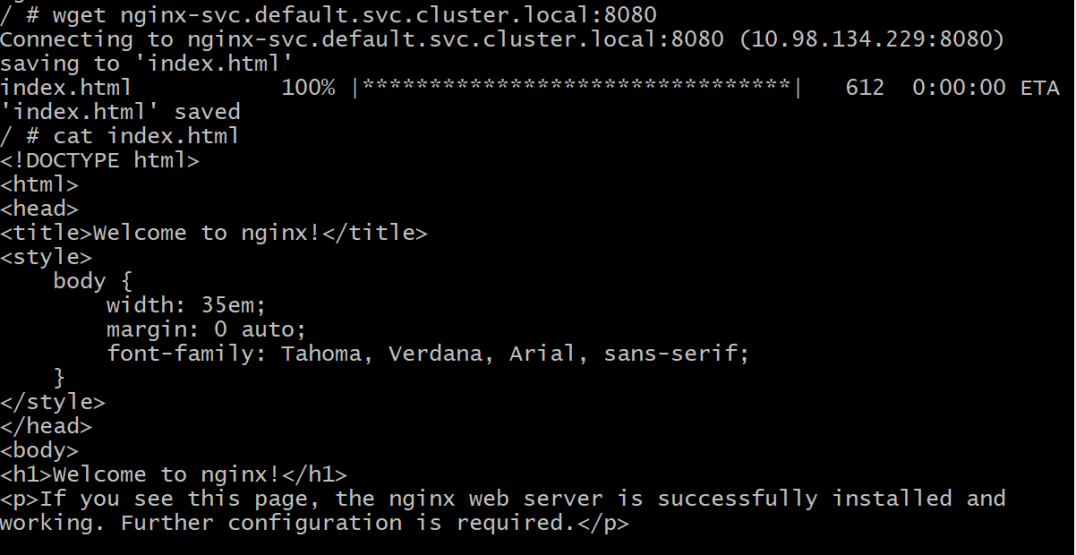
初探Service服务发现机制
1.Service简介 Service是将运行在一组Pod上的应用程序发布为网络服务的抽象方法。 主要功能:服务发现和负载均衡。 Service类型的包括ClusterIP类型、NodePort类型、LoadBalancer类型、ExternalName类型 2.Endpoints简介 Endpoints是一种Kubernetes资源…...

【C++】纯虚函数类外可以写实现吗?
1. 答案 先说答案,可以。 2.代码测试 .h头文件 #include <iostream> #include <string>// 抽象基类 class AbstractBase { public:AbstractBase() default;virtual ~AbstractBase() default; // 默认析构函数public:virtual int PureVirtualFunct…...

区块链技术概述
区块链技术是一种去中心化、分布式账本技术,通过密码学、共识机制和智能合约等核心组件,实现数据不可篡改、透明可追溯的系统。 一、核心技术 1. 去中心化 特点:数据存储在网络中的多个节点(计算机),而非…...

Kubernetes 节点自动伸缩(Cluster Autoscaler)原理与实践
在 Kubernetes 集群中,如何在保障应用高可用的同时有效地管理资源,一直是运维人员和开发者关注的重点。随着微服务架构的普及,集群内各个服务的负载波动日趋明显,传统的手动扩缩容方式已无法满足实时性和弹性需求。 Cluster Auto…...
